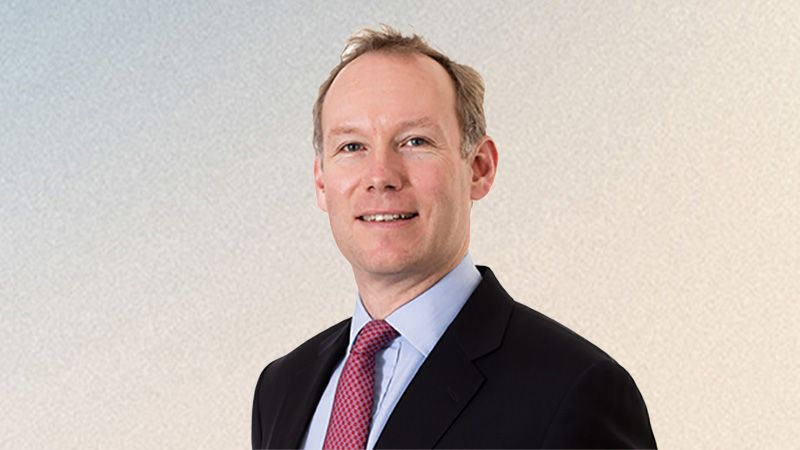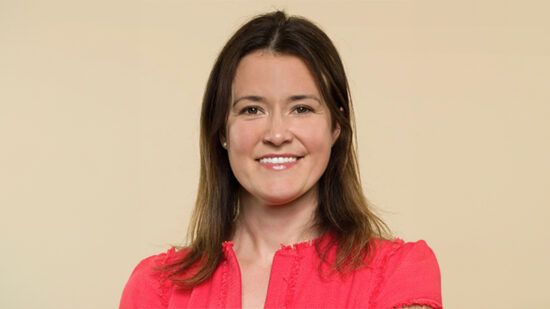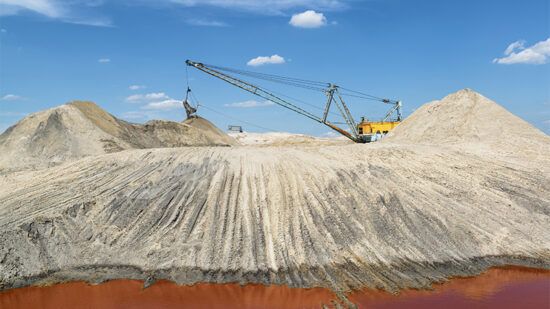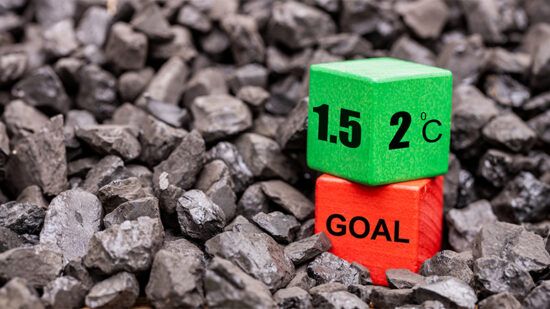In July, the head of Greenbank, John David, announced he would be retiring after spending 15 years at the helm of an organisation he co-founded as the ethical investment arm of Rathbones in 2004, at a time when sustainable investing was barely more than a niche theme.
Since then, investing in sustainability has grown from strength to strength, and, despite navigating the choppy waters of Covid, the war in Ukraine and spiking interest rates, global sustainable fund assets stood steady at $3trn at the end of June 2024.
PA Future spoke to David to find out why he decided to specialise in sustainable investing, the challenges he’s encountered along the way, and how, with interest rates falling and inflation starting to get back under control, the next wave of sustainable investing will be built on more solid foundations.
What sparked your interest in sustainable investing, and what led you to become one of the founders of Greenbank when ethical investing was a bit more of a niche theme?
I’ve always believed that companies and investors have a responsibility to society and the environment to do the right thing. I’ve always hated the idea that companies seek profit in isolation from everything else, and without any regard for the people and planet around them. So, there’s a moral element to wanting to invest in companies that are doing the right thing and encouraging them to do that.
To me, there are risks in not doing the right thing, because costs are building up. There’s the risk of litigation, the risk of the loss of clients, the risk of the inability to recruit and retain employees because they don’t want to work for a company that’s doing the wrong thing, and, increasingly over the past couple of decades, the physical and regulatory risks around climate change are growing in importance too. Regulation and legislation have tightened, and I think that will continue, to the point where not doing the right thing is going to pay a heavy financial price.
What challenges did you first encounter, and how did those change as interest in sustainable investing evolve?
Initially from the investment company side, there were companies we might be investing in that just had a complete lack of understanding, in many cases, and often a lack of engagement with sustainability as an issue. Many saw it as quite superficial to them. So, for example, it was often the case that, if we phoned up a company to talk about sustainability, we’d just get put through to their marketing or PR department because it was seen as something that was talked about in the CSR (Corporate Social Responsibility) report, as they were called at the time. But it was a bit superficial from a company’s perspective, and they could pretty much get away with saying anything.
That posed a number of problems for us, primarily because there wasn’t the data available to analyse, in terms of their carbon emissions, what their policy on supply chain management is, etc. It just wasn’t part of the typical company’s operations and management.
From a team perspective, there was a lack of expertise. There weren’t that many people who specialised in sustainable investment, so we were creating that expertise from the ground up.
Fast forward to 2024. If you phone up a company and you ask to talk about sustainability, with a bit of luck, you’ll get through to the executive’s office, or their head of sustainability. It might not always be the case, but now, they understand sustainability as a risk, and they believe in doing something about it – although not always at the pace we might all like to see.
The sustainable investment space saw an explosion in interest in the late 2010s and into the beginning of the 2020s. Did you expect to see that enthusiasm appear sooner? Or did that feel like a natural trajectory to you?
It took a lot longer than I expected it to. There are two strains of thought here. There’s one part of the brain that goes: “Surely you get it? Why haven’t you got this already? This should be happening much more quickly.” But then, there’s the other half which rationalises that, by our nature, humans are sometimes kind of greedy and self-serving. We have executive remuneration packages, and governments that operate on very short-term cycles, and the issues we’re talking about are relatively long-term. We need to put the building blocks in place now to see any meaningful impact over the next 10 – maybe even 20 – years. We’re talking about societal change and everything that goes along with that.
And would you say there were any notable moments during your career that served as a good learning opportunity, or perhaps where things didn’t quite go the way you expected?
As a recent example, as we’ve just said, from 2018 to 2021, there was an increasing trajectory of interest in everything to do with sustainable investment, driven by increasing client demand. But alongside that, there was also a boom in greenwashing. It was easy to say you were doing something that you weren’t doing, and it was something I found myself being very cautious about, but, at the same, time it was heartening to see that there was more interest in the space.
Part of it was supported by the fact that part of the market, from a macroeconomic perspective, was performing pretty strongly because sustainable investment portfolios tend to have a bias toward more growth-oriented companies which tend to outperform in low-interest rate environments, which is what we were in post-financial crisis and during Covid.
But there was always a question in my mind about whether there was a better term to use than ‘sustainable’. 2022 and 2023 showed how little commitment there was for many parts of the market to sustainability. In the context of the conflict in Ukraine, interest rates started to rise, and some investment companies quickly rolled back their commitments. We’ve also seen the development of regulation to bring a bit more control to the sustainable investment space and to tackle greenwashing – things like advertising standarisation, the Green Claims Code and the evolution of the Financial Conduct Authority’s Sustainable Disclosure Requirements (SDR). So, it’s been a very interesting period.
The optimist in me hopes that sustainable investment will come out stronger as a result of some of these challenges, because it’s made people stop and think about what it is they’re doing and why they’re doing it, and again, perhaps focus a little bit on the longer term rather than the next quarter of returns. As interest rates start to fall, and the performance of sustainable investments picks up again, I hope the next wave of interest in this space will be built on more thoughtful foundations, because investment managers now have a lot more to think about than just jumping on the bandwagon.
Reflecting on the state of the sustainable investment industry now, what would you identify as a major positive, and a major negative?
On the positive side, the investment space has broadened out significantly, and there are some very credible companies out there now that didn’t exist even five years ago right across the spectrum of asset management, wealth managers, data providers, etc.
On the negative side, perhaps tying back to that discussion around 2022 and 2023 trends, it’s the fickleness of much of the financial market, and the short-termism. But it’s difficult, because often investment managers are judged on their past quarter investment performance, and they’re being benchmarked against global indices which still have considerable exposure to things like fossil fuels. That’s a problem because you’ve got to display a certain amount of boldness by managing portfolios that look different from that.
Throughout my time at Greenbank, I think we’ve managed that because we’ve been able to set out a clear philosophy and have a long track record in this space. But for new investment managers getting into this space for the first time, or ratcheting up their approach, it can be much more difficult.
What advice would you give to investment professionals starting out in the world of sustainable finance?
Firstly, take the time to read around the subject. Apart from anything else, it’s fascinating and incredibly engaging! The more you delve, the more you want to understand and know, and the more the connection between environmental and social factors, climate change, resource scarcity and how the world operates today becomes more apparent. You end up looking at portfolios and investments through a slightly different lens. And, of course, there are now a whole host of really good training programmes and qualifications around sustainability and ESG which didn’t exist five years ago, let alone 20 years ago. So, I would encourage them to check those out to provide a foundation of knowledge on the subject.
If it’s a question of more conventional asset management and wanting to take these factors into account, then just build them into the investment discussions and highlight the risks and opportunities of these factors in a way that people who are perhaps less informed can understand. These factors will affect the bottom line, and every investment house is going to understand the concept of a bottom line.
Where do you expect the industry to go next?
I hope that the SDR regulation will provide a robust foundation for the next stage of the sustainable investment space. I think it will provide real credibility to the sustainable investment space. I suppose it may be held back slightly while people understand implications, try to understand what the regulation entails, and then work out how to build it into their investment processes, products and services. But I think, with that refined strength of definition and credibility, it will allow the market to build for the future.
That will coincide, hopefully, with a slightly different market environment, one that isn’t dominated by inflation, as we’ve had over the past couple of years, and one where interest rates are falling back to more normal levels where those growth-oriented companies can start to thrive again.
What would you say has been your most surreal moment in the industry?
Well, this is going back probably 20 years. I remember an asset manager who was trying to sell one of their so-called ethical funds to us and justified the inclusion of Coca-Cola in their portfolio because, as the world got hotter, people would drink more, which I thought was slightly misunderstanding the concept of sustainability.
What do you plan to do after you retire?
I’m very much going to take time out. I’ve had 23 years at Rathbones and Greenbank – 15 if those years at the helm – and I would just like some downtime, probably involving some travel. I would also like to take on some further trusteeships – I’m already a trustee of a large charity – ideally in the conservation or environmental space. I’d love to be in the non-executive advisory position so I can keep a foot in the sustainable investment space. Perhaps I can try and continue to make a difference.








